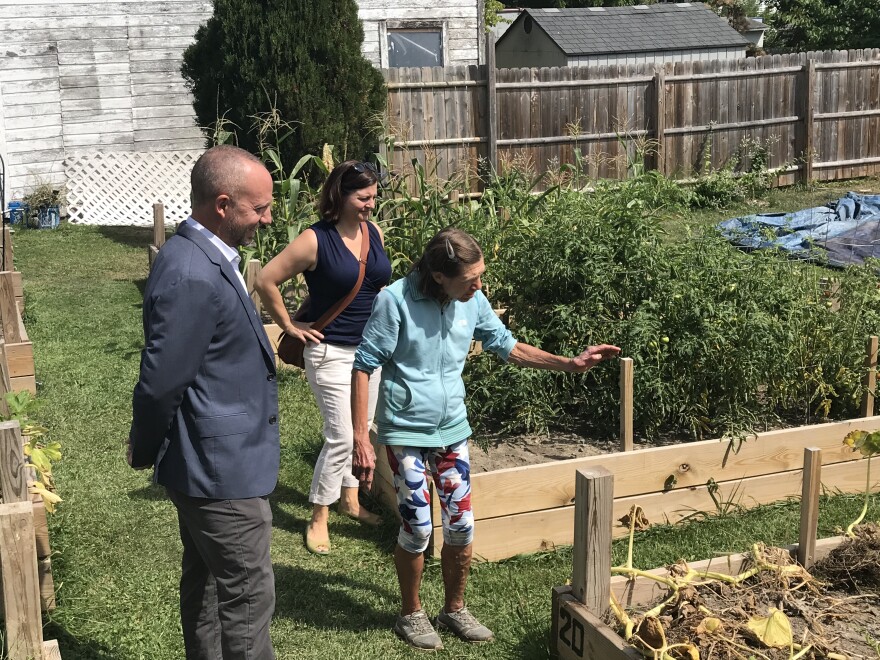New York state officials presented Volunteers Improving Neighborhood Environments (VINES) with a grant to help the organization expand its programs, which includes addressing food insecurity in the Tri-Cities area.
VINES facilitates over 20 community gardens in Broome County. Since its formation in 2007, the organization has also expanded into other areas including a farm-share program and education opportunities.
Department of Environmental Conservation Commissioner Basil Seggos visited a garden in Endicott Tuesday to present the $100,000 grant.
"We hope to keep VINES growing, because VINES is doing incredible work here in the Southern Tier and we want to continue that and be able to showcase them as a leader,” Seggos said.
VINES Executive Director Amelia LoDolce said the funding will be used to build more community gardens and support a program where residents can get free lead-testing kits to ensure soils at home aren’t contaminated before planting a garden.
The funding for the grant is part of $3.1 million being allocated for projects meant to address food insecurity, especially in poorer areas. The funding comes from the state’s Environmental Protection Fund.
Sewage treatment plant
Seggos also commented on the ongoing violation of environmental permits by the Binghamton Johnson City Joint Sewage Treatment Plant. The facility has been exceeding permitted levels of several contaminants going into the Susquehanna River, after a malfunction hindered its treatment process earlier this year.
Seggos said the DEC is still aware of the violation, but is more focused on ensuring the facility can restore its operations.
"Supply chain impacted some of what they were hoping to accomplish this summer, some of the HVAC work, some of the piping, the electronics," Seggos said. "We have a pretty decent degree of patience with them, understanding the position that they were in and how quickly they tried to pivot."
According to a report presented at a meeting of the board overseeing the plan earlier this year, the facility released more than double its permitted value of phosphorus into the river in July and more than triple its permitted value of nitrogen in June.


